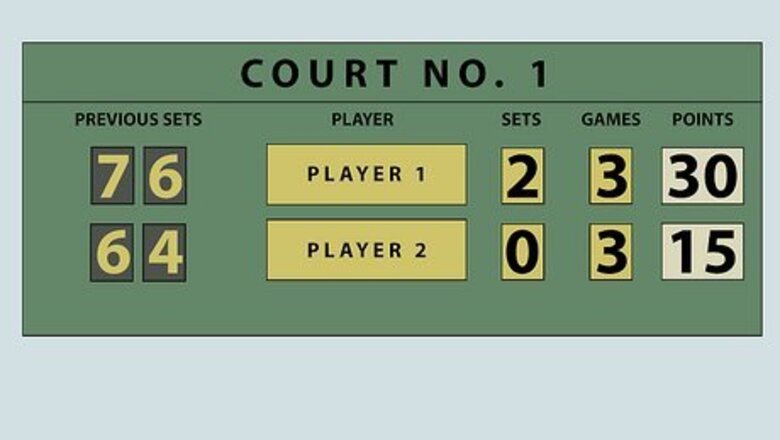
views
Understanding the Score

Consider the difference between a game, set, and a match. The match is the term that refers to the entire playing time of tennis. A match is comprised of either the best of three sets, or the best of five sets (depending on your league). Each set is played best out of six games.

Know how each game is scored. One player serves per game. A game is generally won when a player (or team if you are playing doubles) wins four points. A point is started when one player serves, and the opponent hits it back and the point continues in a back and forth manner until one player hits it out or in the net. Keep in mind that a game might take seven points, or more, to end if, for instance, one player wins three points and another wins four. Each point is given its own value for each player: 1st point won is "15 points" 2nd point won is "30 points" 3rd point won is "40 points" 4th point won makes GAME (signifying the end of the game)

Know how to call the score when you are serving. During each game, it is the server’s job to call out the score so that the opponent can hear it (unless you are actually playing in a professional setting in which they have a score keeper). You are always supposed to say your score, followed by your opponent’s score. For example: If you have won two points and your opponent has won one, you would call out “30-15”. If your opponent has won three points and you have won one, you would call out “15-40”.

Understand how each set is scored. Each set is played until one player or team (if you are playing doubles) has won six games. At the beginning of your serve, you must always call out the number of games each player or team has won, starting with your score. For example: If you have won four games, and your opponent has won two, you would call out “4-2” before beginning your “service game” (the game you serve the ball in, rather than receive).
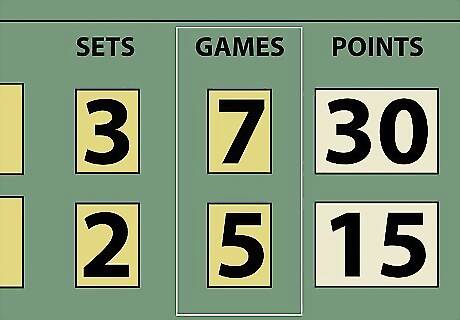
Know that you must always win by two if there is a tie. This refers to both games and sets. Here are some examples: If you both have a score of 40 to 40, then you have to win two points in a row in order to win the game. (See Step 3 below for more details). If you both have won 5 games, and the score is 5 to 5, then you will need to win two more games in a row to make it 7-5 in order to win the set. If it is 5 to 5 and you win the next game, the score becomes 6-5. If you lose the next game and the score is 6-6, you will need to win 8 to 6 in order to win the set. Some sets have had scores of 12 to 10 or even higher.
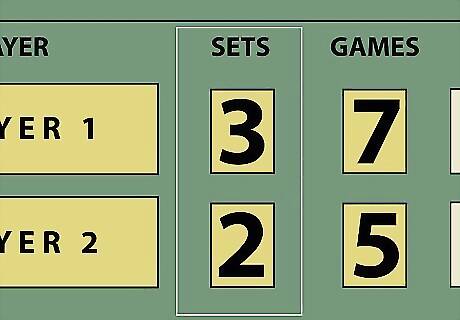
Know when the match has been won (or lost). Depending on the league you are playing in, you will either need to win three out of five sets, or two out of three sets. However unlike games and sets, which you need to win by two, matches do not need to be won by 2 sets. That means that matches can end when one player wins 2 sets of a 3 set match, or 3 sets of a 5 set match.
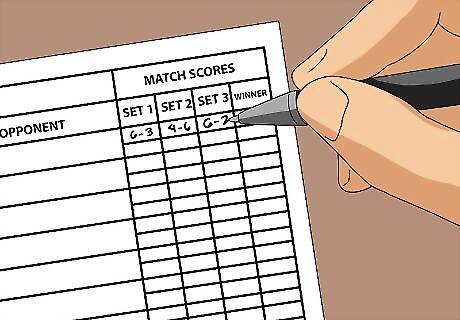
Know how to write down the score after the match. On a scorecard, you should write the score of each set down. You should always write your score first. For example, if you won the match, your scorecard might look like this: 6-3, 4-6, 6-2. That means that you won the first set 6 games to 3; you lost the second set 4 games to 6; and you won the third set 6 games to 2.
Understanding the Terminology
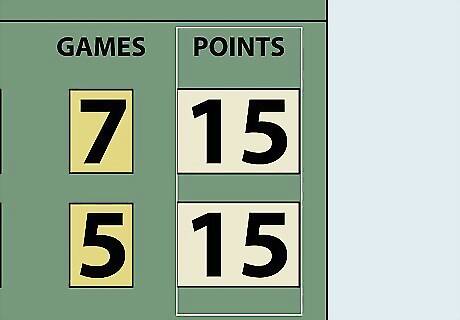
Understand what ‘all’ means in tennis. ‘All’ essentially means ‘both’ in tennis lingo. If you and your opponent have both won one point, thus making it 15-15, you would actually call out “15-all”. The same goes for sets. If you both have won three games, you would call out “3-all” before starting your serve.
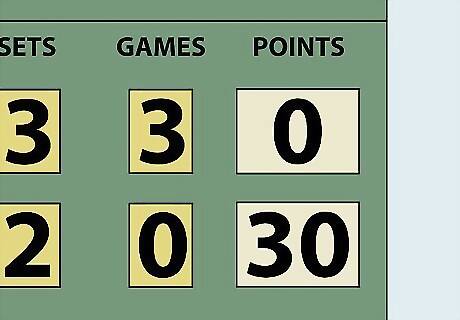
Know what ‘love’ means. And no, we are not talking about the romantic, or even the platonic, kind of love. In tennis, the word ‘love’ refers to a score of zero. For example: If you are serving and have not won any points, but your opponent has won two, you would call out “love-30”. Same goes for games. If you have won three games, but your opponent has won none, you would call out “3-love”. If you are just beginning a game and neither of you have won any points, you would call out “love-all”. (Which is a pretty nice sentiment to begin a game with).
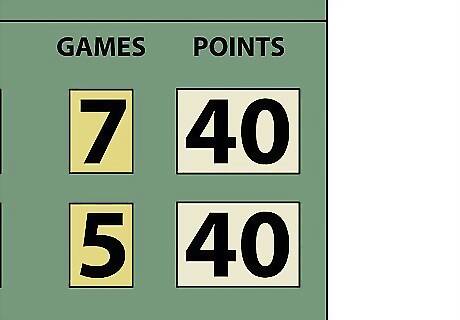
Understand the words ‘deuce’ and ‘advantage’. In tennis, when two players have a tied score of 40 to 40 during a game, it is called a ‘deuce’. There are two ways to play out a deuce--either the person to get the next point wins, or you play ‘advantage’ (‘ad’ for short). This means that a player must win the deuce point, and the following point.
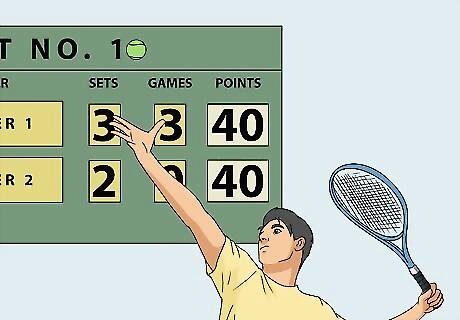
Understand ‘ad-in’ and ‘ad-out’. When the player serving wins the deuce point, the score is ‘ad-in’ (advantage-in, meaning the server has the advantage). When the receiver wins the deuce point, the score is ‘ad-out’. If one player wins the deuce point, but doesn’t win the ad, then the score goes back to deuce. For example, if you were serving and you both won four points (making it 40-40 a.k.a. deuce) then you would serve again. Let’s say you won the deuce point making it ‘ad-in’. If you win the next point, you win the game. If you lose the next point, the score goes back to deuce and your opponent has the chance to beat you and get ‘ad-out’. If your opponent loses the ‘ad-out’, it goes back to deuce...etc.



















Comments
0 comment